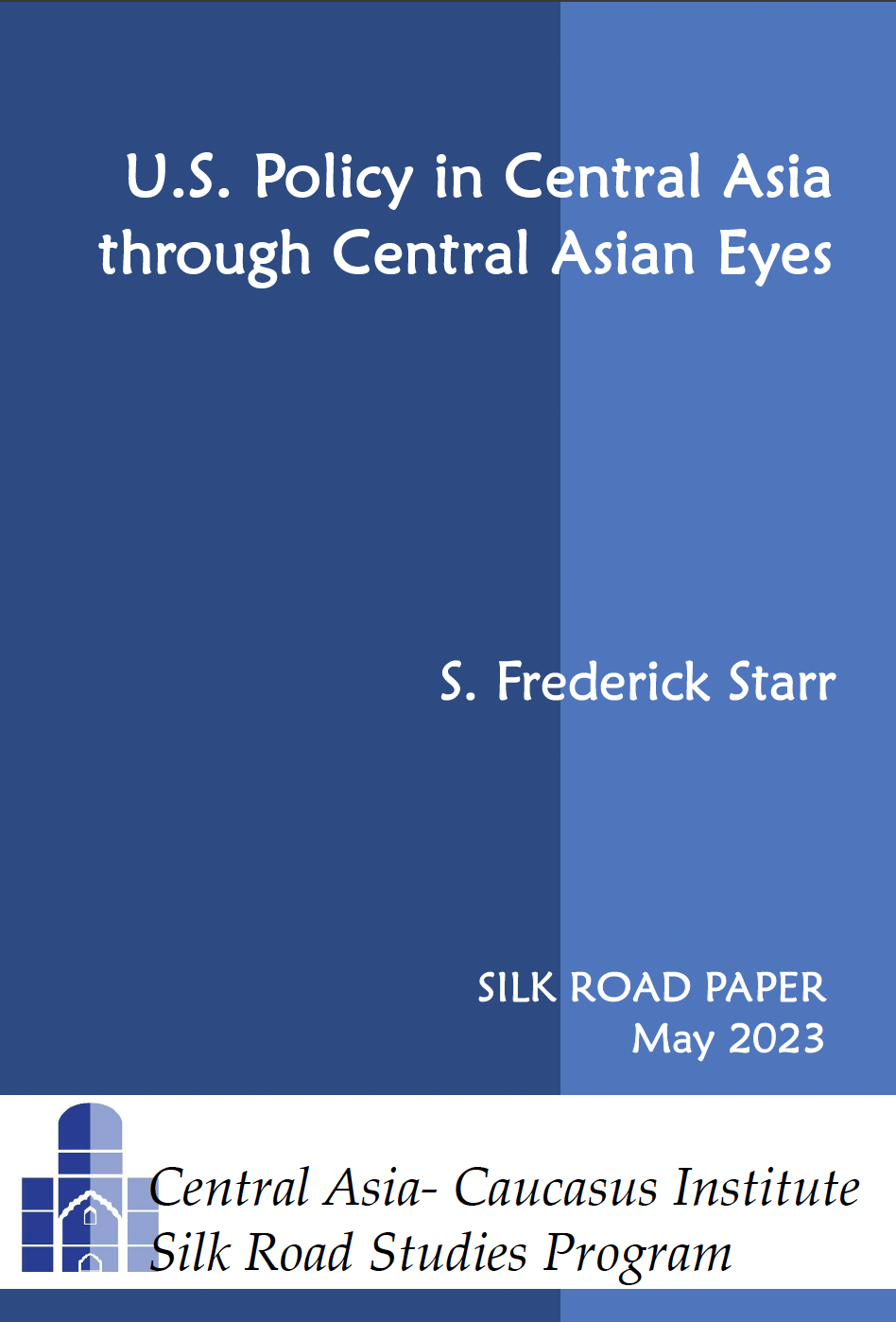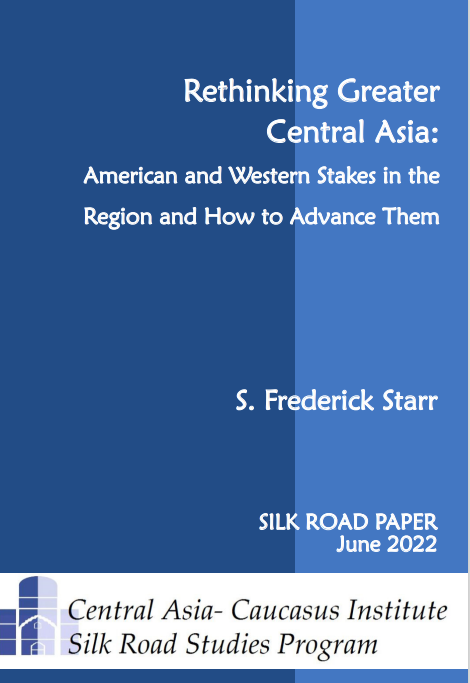The Viking Railroad, connecting Lithuania with Ukraine via Belarus, is not among the most well-publicized transportation projects in the former Soviet Union but it is emerging as one of the most important. Georgia, Azerbaijan, and Kazakhstan have recently announced their willingness to partake and volumes are steadily expanding. The potential gains are also significant. Not only will participating governments capture sizeable transit revenues but old animosities, notably between Belarus and Lithuania, are being addressed as part of it. Russia, too, benefits as competition will revitalize its own railroads. The Viking Railroad’s commercial viability is proven but endemic corruption in states beyond may derail further extensions and erase the slim margins to sea-borne trade.
BACKGROUND: On October 11, Trend News Agency reported Kazakhstan’s desire to participate in the Viking Railroad project, connecting the Lithuanian port of Klaipeda with the Black Sea, with planned extensions to the South Caucasus, Central Asia, and China. Astana’s interest in the project follows similar recent declarations from Baku and Tbilisi. The Viking Railroad was launched in 2003 but did not gather real momentum until around 2007, coinciding with the launch of the EU’s Eastern Partnership initiative.
The Viking Railroad is an intermodal project, using both rail and ship. The project’s core runs between Klaipeda in Lithuania, via Belarus, to the Ukrainian port of Odessa on the Black Sea, but its full stretch includes the United Kingdom and distant China. Starting in Great Britain, cargo is transported by DFDS Seaways to Gothenburg in Sweden where it links with a cross-country railroad hauling containers to the port of Karlshamn on the Baltic Sea.
After arriving at the port of Klaipeda on the Baltic Sea’s Eastern Shore, containers are forwarded via Viking Railroad to Odessa, across the Black Sea, and thence to either Turkey or Georgia. The Turkey spurs extend southward towards the Middle East, the Georgian port of Batumi links the project to onward connections in Armenia and Azerbaijan. From Baku freight is shipped across the Caspian Sea to Kazakhstan, transiting Uzbekistan, to the southern Kazakh city of Almaty close to the Chinese border. Once in China, cargo is loaded onto the East-West railroad connecting Western China with the booming coastal cities of Shanghai and Beijing.
The Viking train, running two times a day, carries both 20 and 40 feet containers and is, according to the railroad consortium, cheaper and faster than truck transport. Realizing these time savings and economic gains, forwarders are increasingly turning to rail as seen in expanding volumes on this line. For example, in 2003 only 175 TEU (one TEU is equivalent to a 20-feet container) was transported. By 2007 this figure had expanded to 40,066 TEU, representing roughly two fifty car locomotives per day, and transported cargo over the first eight months of this year already exceed the total for 2010.
While the primary motivating factor for the Viking Railroad is commercial, the project is financed with EU support and accords with Brussels’ Eastern Partnership initiative for Armenia, Azerbaijan, Belarus, Georgia, Moldova and Ukraine, launched in 2008-2009. It also forms part of Lithuania’s own “neighborhood policy” involving active promotion of ties with the South Caucasus, as manifested in the opening of Lithuanian Embassies in Yerevan and Baku in 2007, and Vilnius’ active promotion of EU-Belarus and EU-Ukraine ties.
The Viking Railroad is merely one component in a much larger, uncoordinated, effort of post-colonial reintegration and diversification of transport links across the continent. For more than a century Russia’s imperial strategy was to strengthen links with the center while leaving those among the other non-Russian republics underdeveloped. This map is now being reconfigured, introducing a healthy amount of competition in territories heretofore under Moscow’s purview.
IMPLICATIONS: Five main implications can be identified. First, the Viking Railroad will dovetail with a number of other similar projects elsewhere, producing both economic synergies and a plethora of new connections. Notable examples include China’s railroad investments in Central Asian and South Asian networks; railroad projects linking Afghanistan to Iran, Uzbekistan, Pakistan, and China; North-South railroad projects connecting Kazakhstan with the Persian Gulf; and the recent completion of a line running from Pakistan to Turkey. Uzbekistan’s desert town of Navoi is emerging as the hub of these developments, catering to both North-South and East-West networks and, including, it seems, Viking Railroad.
Second, the Viking Railroad will promote better ties among participating countries. Interlocutors underline that Former Lithuanian Minister of Economy, Petras ?esna, repeatedly voiced his concern in the early 2000s that Belarus used its exports from the Klaipeda port as a bargaining chip in return for energy sales. With Belarus now being a participant in the Viking Railroad, it will cement ties between these countries and diversify their trade and transport links away from Soviet-era dependencies.
Third, the Viking Railroad introduces further competition into Eurasian railroad transportation. This is essential if railroads are to remain competitive with sea-borne transport. Specifically, Viking Railroad and its stretches across the Black Sea will compete with the so-called Eurasian Landbridge, running from Rotterdam to the Chinese East Coast north of the Black and Caspian Seas via Russia and Kazakhstan. The competition between these two corridors will promote speedier border crossings and ultimately produce a business climate more conducive to trade and development.
Fourth, as with any transportation or pipeline project in post-Soviet space, there will be geopolitical implications attached to it. Russia has so far stayed silent on the Viking Railroad initiative but if any precedent can be inferred from its reaction to the European Eastern Partnership, which Foreign Minister Sergei Lavrov was quick to denounce, Moscow is likely to oppose these developments. Is Russia the inevitable “loser”? Not necessarily. Russian companies can utilize Viking Railroad in its own trade with Great Britain, the Middle East, and South Asia, strengthening ties with the former Soviet republics and countries beyond on a sound commercial basis. Competition will also spur its own languishing Mercury Line, running from Klaipeda, via Belarus, to Russia.
Fifth, all of these gains may come to naught if the problems of corruption and slow border-crossings are not addressed. Only a cursory glance at the completed projects of EU’s TRACECA initiative suggests that corruption deserves more attention than hitherto acknowledged. One extensive study on the Moldova-Ukraine border crossing, for instance, only notes this problem in passing. Cut-throat competition with sea-borne transport, slim margins of operation, and demands for just-in-time deliveries, make the viability of overland transport contingent on tackling these two impediments successfully.
CONCLUSIONS: The Viking Railroad forms part of a much more wide-ranging effort of post-colonial reintegration with neighbors and states beyond. It will produce economic synergies, options, and opportunities as it dovetails with other similar projects across the continent. The railroad will upgrade political relations among participating states, warming frosty ties among some of them. Russia will gain, too, as competition forces Moscow to improve its own services. The greatest obstacles to these potential gains are corruption and slow customs procedures, which alone or in conjunction may short-circuit extensions beyond Georgia. The core of the EU’s Eastern Partnership initiative is promotion of rule of law, the core of TRACECA is transport. Coordinating these two programs is key to exploit the full potentials of Viking Railroad and its extension further east.
AUTHOR’S BIO: Nicklas Norling is a Ph.D. Candidate at Johns Hopkins University’s School of Advanced International Studies, and a Nonresident Research Fellow with the Central Asia-Caucasus Institute & Silk Road Studies Program Joint Center.






 Book S. Frederick Starr and Svante E. Cornell,
Book S. Frederick Starr and Svante E. Cornell,